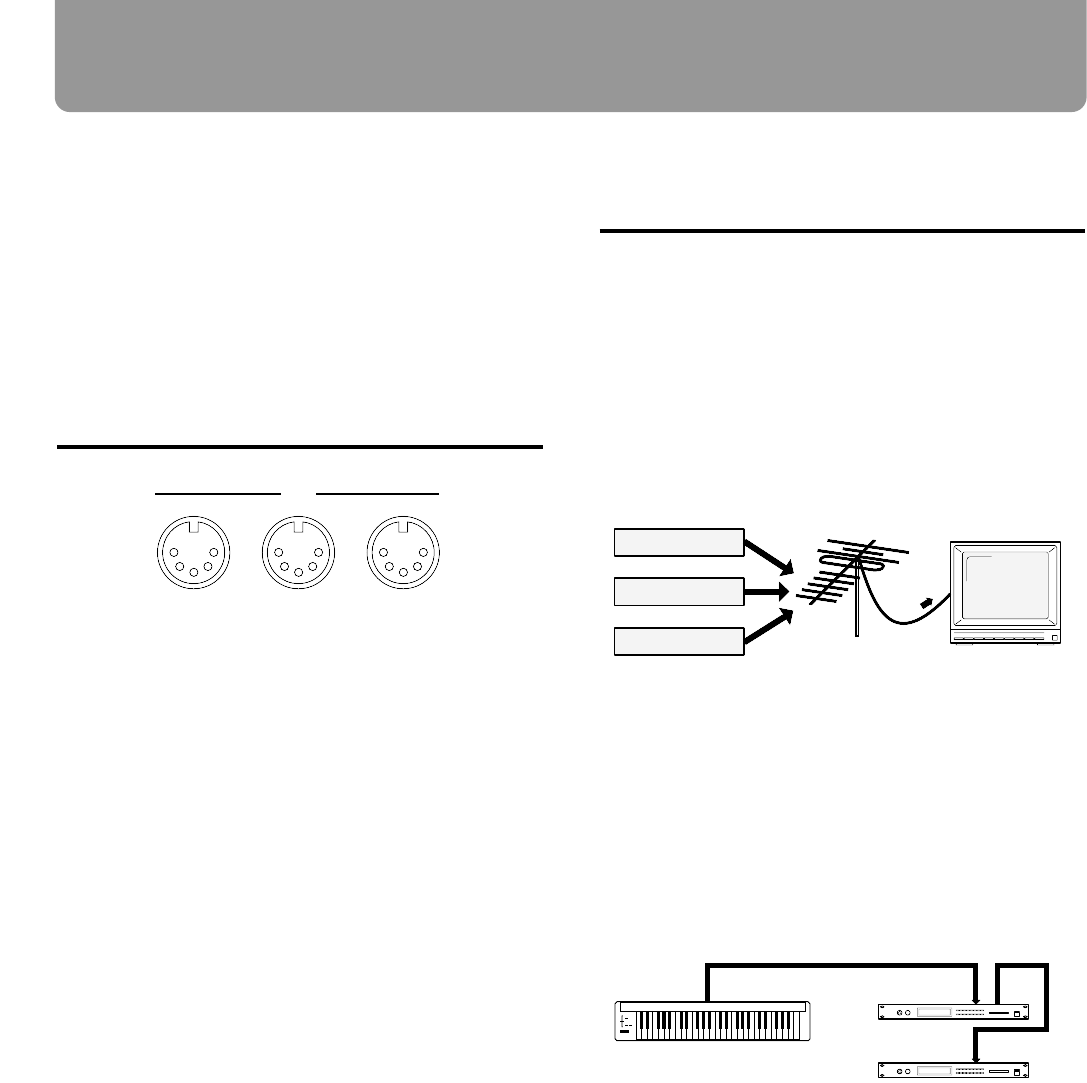
MIDI means “Musical Instrument Digital Interface”. By
using MIDI you can play and/or control multiple instru-
ments from a single MIDI controller, keyboard or sequencer,
and is a world-wide standard, allowing communication
between MIDI equipped instruments, no matter who manu-
factured them.
If you wish to use a MIDI keyboard to record on the TD-10,
or to use an external sequencer to play the TD-10, we sug-
gest that you understand the explanations that follow.
MIDI connectors
fig.12-03a
MIDI IN
This connector receives messages from external MIDI
devices ( keyboards, sequencers controllers etc.) to play the
TD-10’s instruments or change its settings.
MIDI OUT
The TD-10 transmits musical data from its sequencer or pads
via the MIDI OUT, and can also use this connector save
internal song data and settings to an external sequencer for
back-up purposes.
MIDI THRU
All messages received at MIDI IN are re-transmitted from
this connector. (if Soft Thru is “ON”) refer to “Chapter 10.
Functions using MIDI,” and read the section “Using the TD-
10 with the Roland SPD-11” (p. 123). This connector is used
when you wish to transmit the same stream of MIDI data to
other devices. With the factory settings, this connector will
function as MIDI OUT only.
MIDI channels and multi-
timbral sound sources
MIDI transmits many types of data over a single MIDI cable.
This is made possible by the concept of MIDI channels
which allow a device to distinguish the data that is or is not
intended for it. In some ways, MIDI channels are similar to
television channels. By changing the channel on a television
set, you can view the programs that are being broadcast by
different stations. In the same way, MIDI also allows a
device to select the information intended for that device out
of the variety of information that is being transmitted to it.
fig.12-03be
MIDI uses sixteen channels; 1 through 16. Set the receiving
device so that it will receive only the channel that it needs to
receive. In the example below, the transmitting device is
transmitting on channels 1 and 2, but sound module A has
been set to receive only channel 1, and sound module B has
been set to receive only channel 2. In this way, sound mod-
ule A plays the guitar part and sound module B plays the
bass part.
fig.12-03ce
When the TD-10 is used as a sound module, it can function
on four different channels simultaneously. This means that a
single TD-10 can play a four-part ensemble. Sound modules
like the TD-10 which can receive multiple
MIDI channels at once to play different sounds on each
channel are called “multi-timbral sound modules.”
THRU OUT
IN
MIDI
The cable from the antenna carries the TV
signals from many broadcast stations.
The TV is set to the channel of the station
you wish to watch.
Station A
Station B
Station C
Transmit channel : 1, 2
Receive
channel : 1
Sound
Module A
MIDI OUT MIDI IN MIDI THRU
MIDI IN
Receive
channel : 2
Sound
Module B
MIDI keyboard
About MIDI
140


















